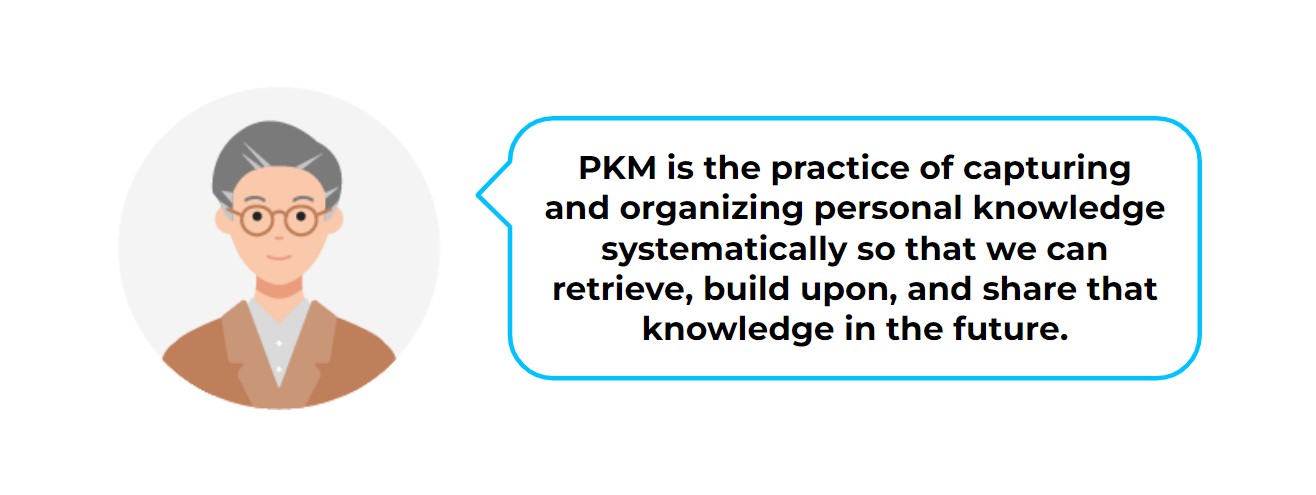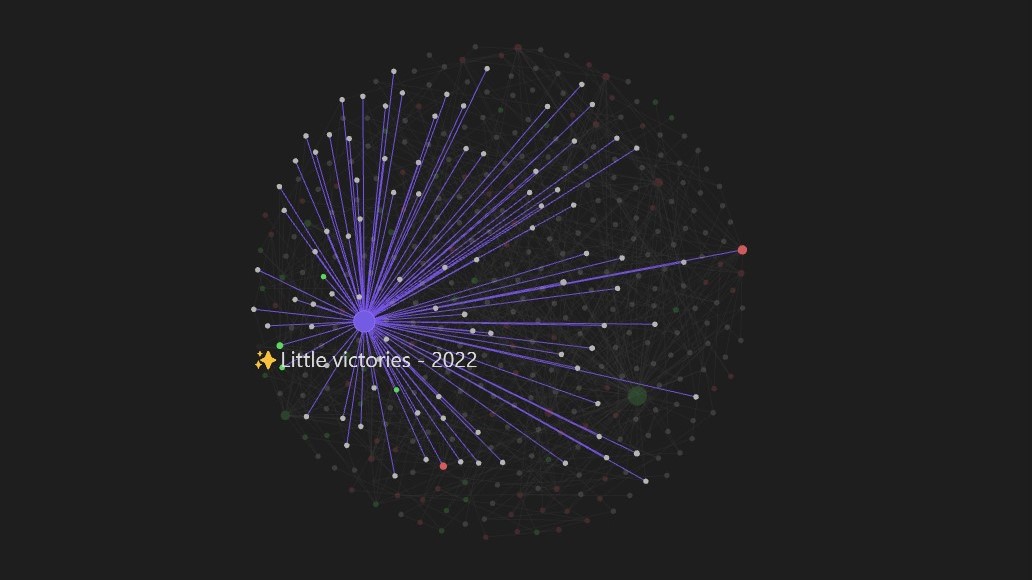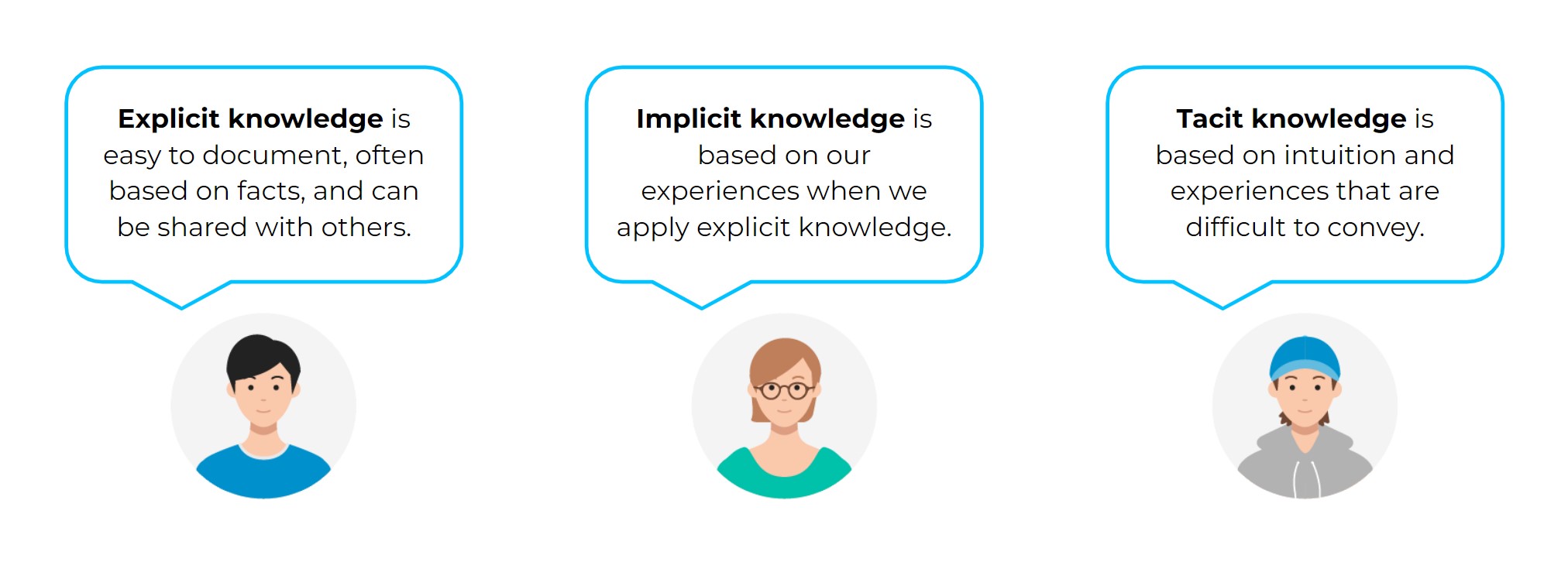Summary
This post is for Day 4 of Mercari Advent Calendar 2022, brought to you by @josh from the Engineering Office.
Many engineers and engineering managers at Mercari are big advocates of personal knowledge management (PKM), and they enjoy capturing, organizing, and sharing the knowledge they have gained through their work or personal lives. We even have an internal Slack channel for sharing PKM-related topics.
As the saying goes, "knowledge is power." But how do we get to the point of that knowledge becoming power?
In this blog post, I’ll describe:
- Some benefits of PKM
- A method for approaching PKM
- Applying knowledge management in an organization
My goal in this blog post is to help you understand how your knowledge can benefit yourself in the future as well as your colleagues and maybe even your entire organization.
What is personal knowledge management (PKM)?
PKM is the practice of capturing and organizing personal knowledge systematically so that we can retrieve, build upon, and share that knowledge in the future. To put it another way, imagine having what many PKM advocates call a "second brain," with all your notes available through search or an interconnected network of links or tags.
To achieve this state, you will need knowledge management software that you can treat as your knowledge base. Some popular PKM tools include:
- Obsidian, which has a variety of plugins to add and further expand functions
- Notion, which has many features ready to use out of the box
- Roam Research, which has a unique "multiplayer" sharing feature
Please note that the descriptions of the tools mentioned above may change over time.
How you document and use your knowledge depends on your circumstances; I encourage you to research and experiment with the variety of knowledge management software available.

Benefits of PKM
Some benefits of capturing our personal knowledge include:
- Recording and better understanding our thoughts or processes at a given time
- Retrieving knowledge in a systematic way
- Reducing time spent remembering or relearning knowledge
- Achieving a single place—the oft spoken-of "single source of truth"—for knowledge
- Sharing knowledge more easily
Understanding these benefits is important when we start forming the habit of capturing knowledge.
A key part to forming that habit is to recognize how we can retrieve that knowledge in the future. Whether you prefer searching, tagging, or browsing a graph (depending on the PKM tool) to find knowledge, you have a variety of options to retrieve your knowledge. And by being able to easily retrieve that knowledge, we can further build on or share that knowledge with others.
Establishing an approach to PKM
Now that we see the benefits of practicing PKM, how do we set up a foundation for documenting our knowledge and leveraging our second brain?
Capture knowledge
First, we need to capture our knowledge. We need to recognize that the knowledge we have is important, applicable in the future, and worth documenting.
In knowledge management, there are three types of knowledge:
- Explicit knowledge is easy to document, often based on facts, and can be shared with others.
- For example, instructions on how to log in to the Mercari app on the web would be explicit knowledge.
- Implicit knowledge is based on our experiences when we apply explicit knowledge.
- For example, notes on how you pack specific types of items on Mercari and where you send them from would be implicit knowledge.
- Tacit knowledge is based on intuition and experiences that are difficult to convey.
- For example, your experience with the buying and selling process on Mercari would be tacit knowledge.
By capturing our explicit and implicit knowledge to the best of our abilities, we can reference and build on our knowledge, Additionally, that documented knowledge may be helpful in conveying the tacit knowledge that comes with our unique experiences in our work and personal lives.
Organize knowledge
Gradually, our knowledge begins to pile up. Two popular methods to ensure that our knowledge is easy to find are tagging and linking. By using tags and links, we can be sure that related notes are linked to each other.
As a visual example, in the heading of this blog post, you may have noticed a sphere containing many nodes. Each of those nodes is a note, and the network of lines shows a linkage between notes. In the software that I personally use, if I hover over a large node, I can see which notes I have linked to within the larger node.

As you can see, I have many notes that complement my main “✨Little victories – 2022” note and provide me with greater context.
Retrieve knowledge
Within knowledge management software, we can retrieve knowledge in a variety of ways, such as:
- Searching by keyword
- Navigating from one note to linked notes on the related topic
- Using tags to show notes on the same topic or idea
By retrieving our knowledge, we not only find what we previously documented but also have a chance to update that knowledge if the content is outdated. In a PKM environment, maintaining our knowledge is especially important because we are the sole owners of our "knowledge gardens."
Apply knowledge
Now that we’ve captured, organized, and retrieved our knowledge, we need to apply that knowledge in order to reap the benefits.
We can apply knowledge in a variety of ways, like:
- Presenting at a conference
- Planning our own career and skill development
- Continuing with a project from weeks or months ago, without having to rely on memory
These methods of applying knowledge are only a few examples. Again, once we start forming habits to systematically capture and retrieve our knowledge, we will get into the habit of knowing where to look and save time and effort in relearning.
Practicing knowledge management in the organization
Now that we’ve discussed PKM, let’s take it a step further by applying the knowledge management practice throughout an organization.
Before we do that, let’s consider the popular knowledge management adage, "Getting the right knowledge to the right person at the right time." This concept is vital in how we think about knowledge management and base our efforts for capturing, sharing, and maintaining knowledge.

Imagine a team of engineers that have adopted a knowledge management practice to ensure they are sharing well-documented and up-to-date knowledge with each other. Sounds like a collaborative, asynchronous way to make sure everyone’s on the same page, right?
Now, imagine cross-functional teams across multiple divisions that have adopted a consistent knowledge management practice. In this scenario, everyone benefits from knowing exactly where to find the knowledge they need to be quick and efficient in their work.
As with PKM, capturing knowledge effectively requires not only a systematic approach but also the right knowledge management software for your use case. Confluence is a popular solution because of its robust features and capabilities. For an internal or external helpdesk, you might prefer a solution like ServiceNow.
Closing thoughts
At Mercari, we have many engineers who regularly contribute to documentation by sharing knowledge, which benefits not only them but also others throughout the company. Taking this people-centric approach to documentation promotes knowledge sharing and fosters a healthy learning environment.
By capturing knowledge and sharing complex concepts, we can spend less time searching for and relearning knowledge. Instead, we can use that time to work on products and features that delight our users.
Day 5 of the 2022 Mercari Advent Calendar will be written by @afroscript, who is also from the Engineering Office team. Be sure to check it out!




